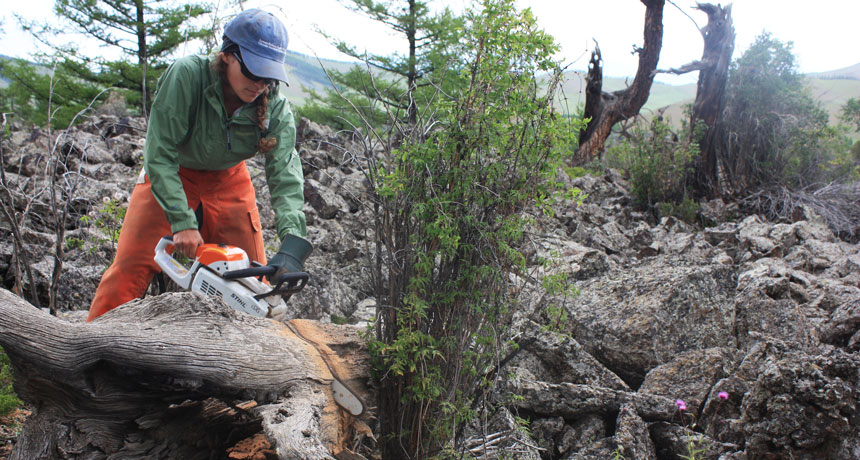
TIMBER A scientist cuts into an ancient pine tree in Mongolia to examine its rings, which are offering new insights into the region’s past climate.
Neil Pederson

TIMBER A scientist cuts into an ancient pine tree in Mongolia to examine its rings, which are offering new insights into the region’s past climate.
Neil Pederson